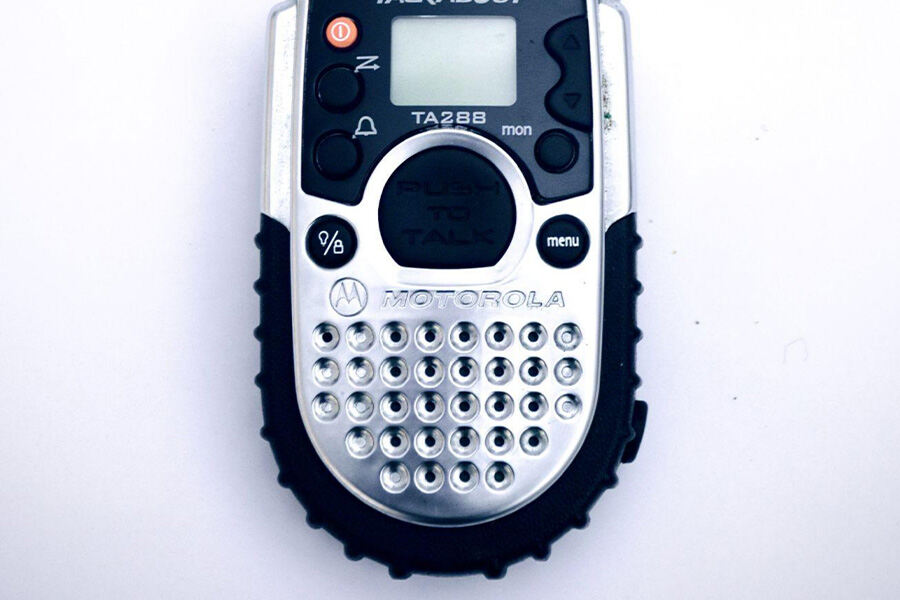Contrary to what’s portrayed in movies, walkie-talkies aren’t just meant for fun games or security purposes. These gadgets are a must-have for people working in several industries, and besides coordination, they won’t fail you in places where cellular reception is patchy or when the mobile phone’s battery dies.
However, when looking for the appropriate two-way radio systems for your customers, the amount of choice can feel overwhelming. This is only natural, given the vast array of options available in the wholesale market.
To help you make the right choice, this article will walk you through the most important things to look for in a walkie-talkie, including the power output, frequency, battery life, and more. So, consider this your ultimate seller’s guide to buying the right walkie-talkies and dive in.
Table of Contents
How do you choose a walkie-talkie?
Types of walkie-talkie
Battery life
Range
Environment
Durability
Conclusion
How do you choose a walkie-talkie?
It can be pretty tempting to invest in the first walkie-talkie that you find on a manufacturer’s website. However, it can be beneficial to look at several factors before you take this step. For instance, understanding the essential features a walkie-talkie should have, and any additional features that can make your customers’ lives easier, will improve your chances of these gadgets getting sold as soon as they reach your store.
Whether this is your first time buying walkie-talkies or you have done it before, considering the following points will help you in the long run.
Types of walkie-talkie
Walkie-talkies can be of several types based on frequency, use cases, and more. Some of the most common types of two-way radios are:
Handheld walkie-talkie
Perfect for short-range communication, handheld walkie-talkies are usually waterproof but not suited to full submersion or being used underwater. Nonetheless, they can be easily fixed to the dashboard or windshield, making them the perfect choice to be used in vehicles, and different weather.
All Terrain Radios (ATR)
As the name suggests, these walkie-talkies are designed for outdoor use and won’t fail to do their job even when dropped in mud, dirt, or wet grass. In addition, they typically feature rubber casing, which helps protect them against bad weather conditions.
Walkie-talkies with the base station
Rather than handheld units, these walkie-talkies can only be used from a base station, meaning they can be bulky and require batteries to function. Base station walkies have a very specific function, however, and are typically mounted on walls for easy access, so users can quickly reach for the device during emergencies.
Battery life

One of the most frustrating things about walkie-talkies can be their battery life, as it will directly affect how long they can be used between charging. Depending on your customers’ needs, walkie-talkies with longer or shorter battery life might work for them. For example, a person who is planning to use their two-way radio for several hours a day requires a device with at least 8 hours of battery life.
Similarly, if a user spends most of their time on the go when using a walkie-talkie, you will have to offer them a device that recharges quickly. Some rechargeable units take several hours to charge fully, while others require just 30 minutes. So, this is one point you should consider when purchasing walkie-talkies in bulk.
Range
Walkie-talkies use radio waves to communicate, and there are two types of devices based on their range of frequencies—VHF and UHF.
UHF, or ultra-high frequency devices, emit radio waves of frequency between 300 MHz and 1000 Mhz. This is important, because as the frequency increases, these signals become more absorbed by surrounding objects, such as trees, and buildings. These interruptions mean the device requires more power to make up for the signal loss, but a higher power consumption decreases the walkie-talkie’s range. So, UHFs are better suited for short-distance communication.
VHF, or very-high frequency, walkie-talkies emit radio waves with a frequency between 30 MHz and 300 MHz. Their lower frequency means they need less power and so can cover a greater distance (5-10 km or more). However, just as with UHF walkie-talkies, obstacles, such as dense woodlands or buildings, can affect the signal of the radio.
As a seller, investing in both VHF and UHF is a good idea as they serve different purposes. For example, VHF radios are ideal to be used in the aviation, maritime, and outdoor security sectors or for leisure purposes like in an open field or golf course. Whereas UHF walkie-talkies are a popular option for indoor environments.
Environment
Another crucial variable is the environment in which your customers might use the walkie-talkies. Depending on the requirements, you might want to consider a multi-channel radio, a two-way radio, or something else.
For instance, if you have a customer who needs a walkie-talkie for a school environment, you will have to offer them a powerful and professional handset with great battery life, multiple channels, and a better range to help them communicate efficiently with different groups. Similarly, a two-way radio for a harsh working environment should be waterproof and certified.
Durability
Walkie-talkies are often used in challenging situations. Hence, it is vital to ensure the devices you offer at your store are built to last.
Contaminants like dust and water are commonplace in industries where two-way radio systems are frequently used. This often leads to equipment damage. So, your walkie-talkie offering should feature a weatherproof casing to protect from damage.
It should also have enough storage capabilities and an ergonomic design that promotes ease of use.

Conclusion
Portable and lightweight, walkie-talkies can easily be carried around and facilitate smooth communication in both indoor and outdoor spaces. So, if you wish to offer your customers a backup communication device for emergencies and coordination, these two-way radio systems are the way to go.
Furthermore, walkie-talkies are a great way to promote safety in the workplace, particularly if the workers work alone. A two-way radio system will help them stay in touch with the rest of the team and thereby stay safe from verbal or physical attacks that commonly happen against lone workers. The good news is that a lot of walkie-talkies feature added safety functions like the man-down feature, emergency alarm button, GPS location tracking, kill/revive functionality, and remote monitor.
If you are looking to supply such walkie-talkies or general ones to your customers, consider browsing the vast array of options on Alibaba.com, and buying wholesale for significant savings.



